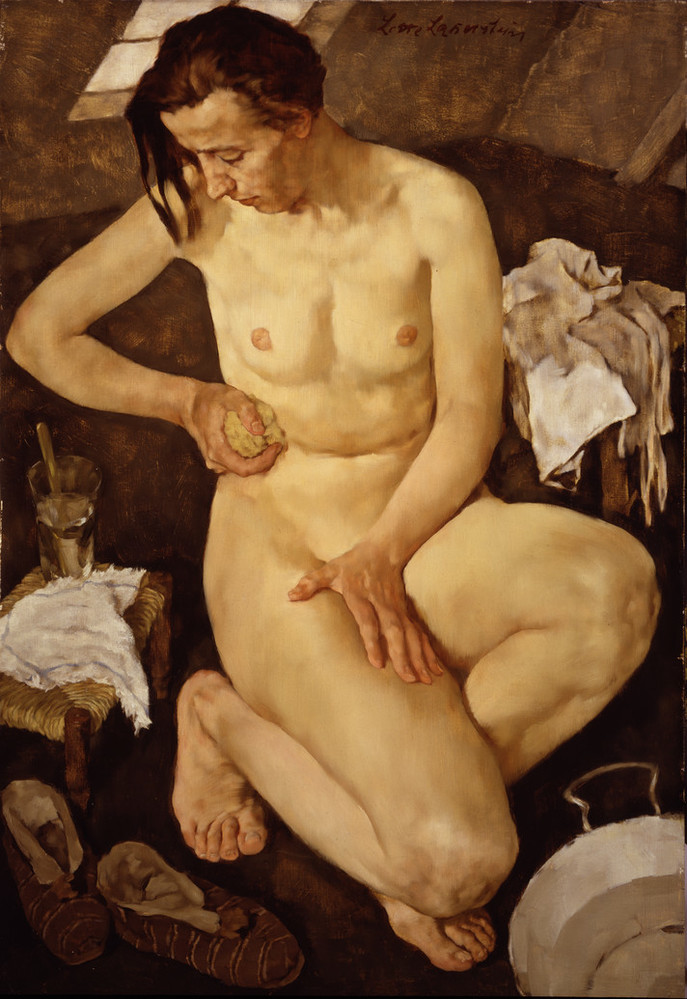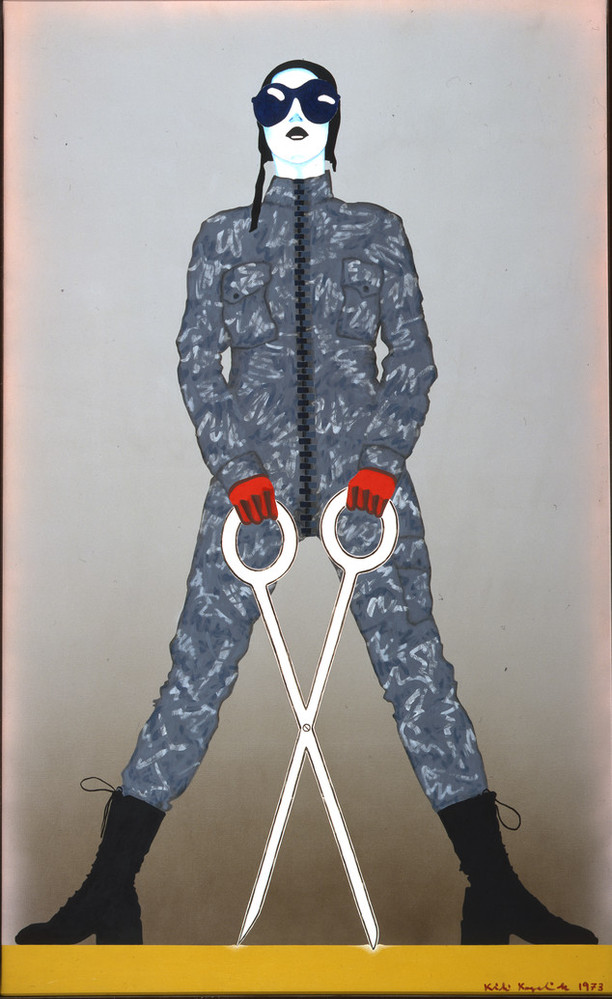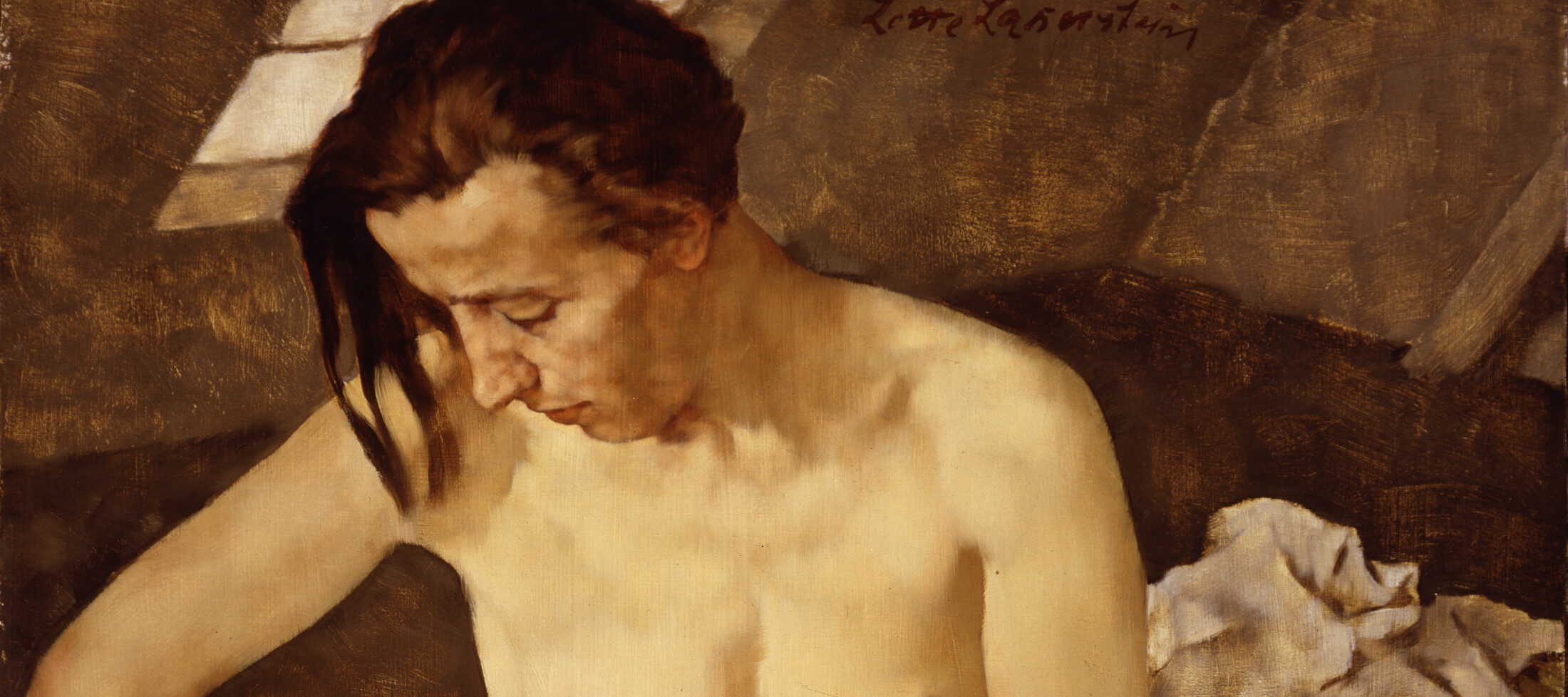Tackling the female nude—a principal subject of male artists for centuries—Lotte Laserstein (1898–1993), a German realist painter, offered a woman’s perspective on this motif in 1930 with Morning Toilette. A portrait of her friend and tennis coach Traute Rose, Morning Toilette features the woman bathing herself. Laserstein depicted her friend realistically, and her observations of the athletic woman are rather unflattering by conventional standards. With Rose’s thick, muscular legs, small, flattened breasts, close-cropped hair, and a hand covering her genitalia, the figure could nearly be mistaken for a male. Through this portrayal, Laserstein wanted to present the neue Frau (“new woman”), independent and powerful.

While the artist champions female empowerment by depicting this capable, athletic woman, she also implicitly rejects idealized portraits of the female nude. The established art historical tradition often featured subjects in an erotic, sexualized manner. In Laserstein’s composition, however, the task of bathing is underwhelming, even banal. In Morning Toilette, Laserstein reclaims the tradition of female nudity and rejects the connotation of exploitation, reengineering the meaning to empower the neue Frau generation.
Almost a half-century later, as the second wave of the feminist movement influenced the art community, Kiki Kogelnik (1935–1997) responded to female exploitation by reclaiming another genre in which women are often idealized and misrepresented—comic book culture. Female superheroes primarily function as sexualized companions to the original male creation, a memorable example being Wonder Woman. As portrayed in a 1970s television show, Wonder Woman had long, flowing hair and large breasts, saving the world in a glorified swim suit. This characterization allows that women can be strong and capable, saving the world—as long as they look sexy while doing it.

Kiki Kogelnik’s Superwoman, 1973, reinvents this version of female superheroes created to satisfy male fantasies and presents the viewer with a capable heroine sans objectification. Like Laserstein’s nude, Kogelnik’s Superwoman possesses a combination of cliché masculine and feminine indicators, juxtaposing her grey camouflage full-coverage jumpsuit and combat boots with her shape and dark red lipstick. The figure stands tall as she holds a massive pair of scissors confidently between her legs as her ironic, pointedly funny weapon. Like Laserstein, the artist chooses a subject where women are typically objectified and transcends that characterization to empower both her female figure and the female viewer.
